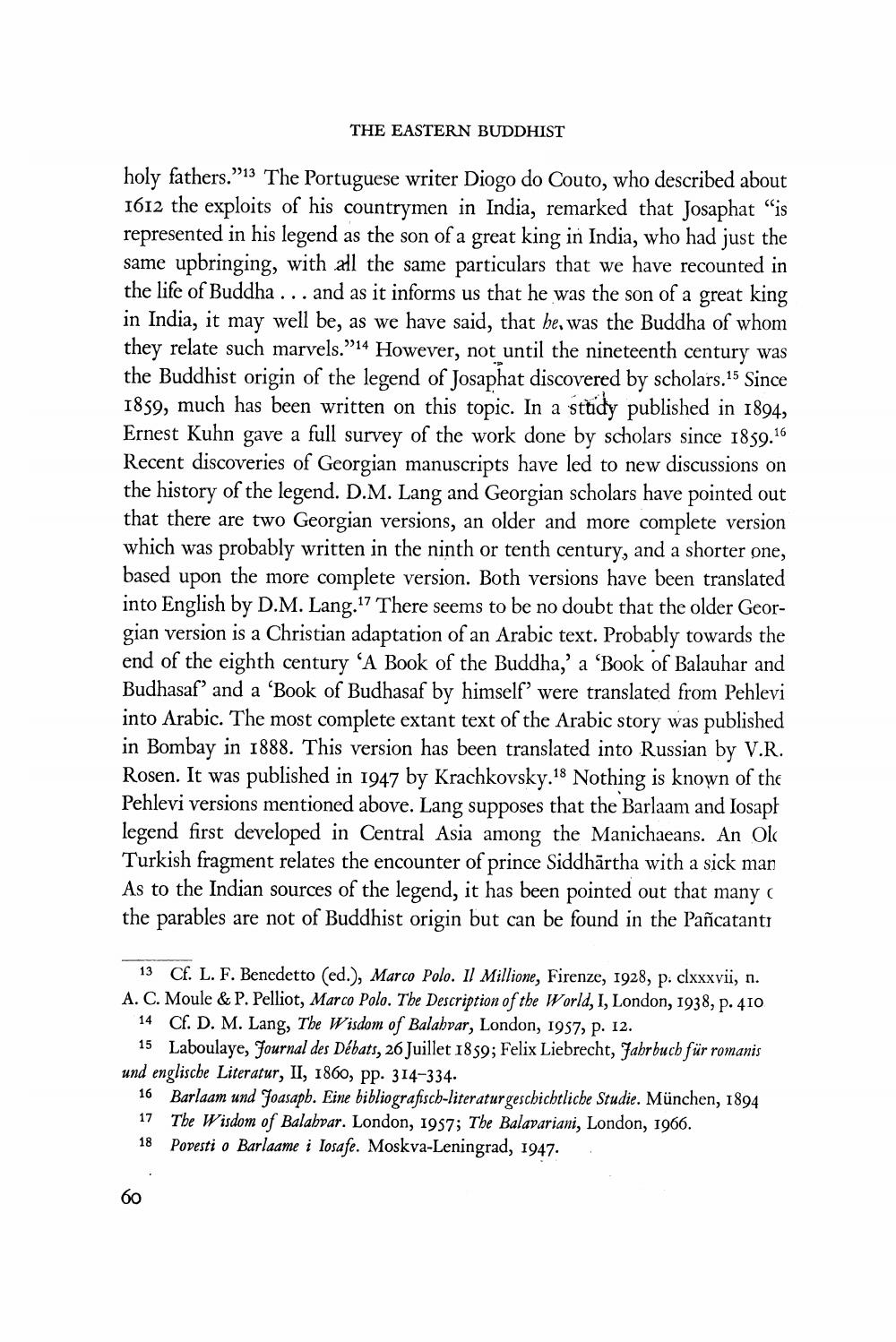Book Title: Brief History Of Buddhist Studies In Europe And Maerica Author(s): J W De Jong Publisher: J W De Jong View full book textPage 6
________________ THE EASTERN BUDDHIST holy fathers.”13 The Portuguese writer Diogo do Couto, who described about 1612 the exploits of his countrymen in India, remarked that Josaphat "is represented in his legend as the son of a great king in India, who had just the same upbringing, with all the same particulars that we have recounted in the life of Buddha ... and as it informs us that he was the son of a great king in India, it may well be, as we have said, that he was the Buddha of whom they relate such marvels."14 However, not until the nineteenth century was the Buddhist origin of the legend of Josaphat discovered by scholars. 15 Since 1859, much has been written on this topic. In a sttidy published in 1894, Ernest Kuhn gave a full survey of the work done by scholars since 1859.16 Recent discoveries of Georgian manuscripts have led to new discussions on the history of the legend. D.M. Lang and Georgian scholars have pointed out that there are two Georgian versions, an older and more complete version which was probably written in the ninth or tenth century, and a shorter one, based upon the more complete version. Both versions have been translated into English by D.M. Lang. 17 There seems to be no doubt that the older Georgian version is a Christian adaptation of an Arabic text. Probably towards the end of the eighth century ‘A Book of the Buddha,' a 'Book of Balauhar and Budhasaf' and a 'Book of Budhasaf by himself' were translated from Pehlevi into Arabic. The most complete extant text of the Arabic story was published in Bombay in 1888. This version has been translated into Russian by V.R. Rosen. It was published in 1947 by Krachkovsky. 18 Nothing is known of the Pehlevi versions mentioned above. Lang supposes that the Barlaam and Iosap! legend first developed in Central Asia among the Manichaeans. An Ok Turkish fragment relates the encounter of prince Siddhārtha with a sick man As to the Indian sources of the legend, it has been pointed out that many the parables are not of Buddhist origin but can be found in the Pañcatanti 13 Cf. L. F. Benedetto (ed.), Marco Polo. Il Millione, Firenze, 1928, p. clxxxvii, n. A. C. Moule & P. Pelliot, Marco Polo. The Description of the World, I, London, 1938, p. 410 14 CF. D. M. Lang, The Wisdom of Balahvar, London, 1987, p. 12. 15 Laboulaye, Journal des Débats, 26 Juillet 1859; Felix Liebrecht, Jahrbuch für romanis und englische Literatur, II, 1860, pp. 314-334. 16 Barlaam und Joasapb. Eine bibliografisch-literaturgeschichtliche Studie. München, 1894 17 The Wisdom of Balabvar. London, 1957; The Balavariani, London, 1966. 18 Povesti o Barlaame i losafe. Moskva-Leningrad, 1947.Page Navigation
1 ... 4 5 6 7 8 9 10 11 12 13 14 15 16 17 18 19 20 21 22 23 24 25 26 27 28 29 30 31 32 33 34 35 36 37 38 39 40 41 42 43 44 45 46 47 48 49 50 51 52 53 54 55 56 57 58 59 60 61 62 ... 86
